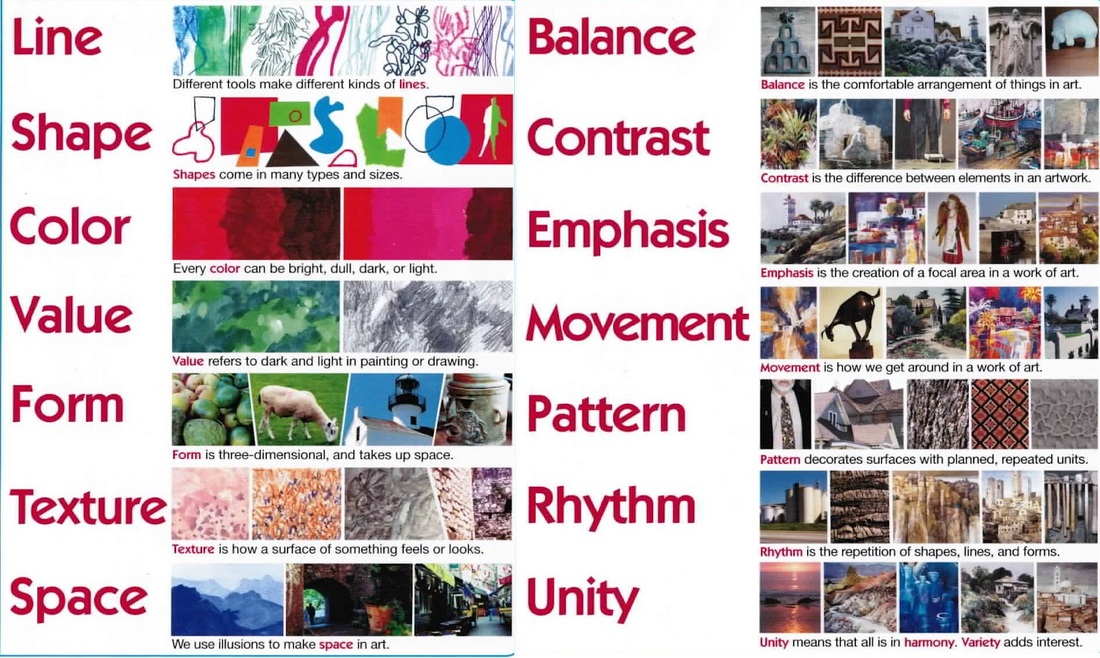
PRINCIPLES OF DESIGN UNITY ART SERIES
It is created with a series of lines which serve as a boundary that shapes the square and separates it from the space around it that is not part of the square. įor example, a square that is drawn on a piece of paper is considered a shape. Shapes are recognizable objects and forms and are usually composed of other elements of design. Main article: Shape and form (visual arts)Ī shape is defined as a two dimensional area that stands out from the space next to or around it due to a defined or implied boundary, or because of differences of value, color, or texture. In the architectural design of a retail environment, colors affect decision making which motivates consumers to buy particular products.Color strategies are used for organization and consistency in a design product.The same color can evoke different emotions, or have various meanings to different individuals and cultures Color allows viewers to have different interpretations of visual designs.Color can create identity for a certain brand or design product.Color is used to put emphasis on desired elements and create visual hierarchy in a piece of art.In certain cultures, different colors can have different meanings. Color holds meaning and can be symbolic.Color is used to create a theme in the design.

Color is used to evoke the desired mood and emotion upon the viewer.Color is used to create harmony, balance, and visual comfort in a design.Over time, color design tools with the function of generating color schemes were developed to facilitate color harmonizing for designers. Ī satisfactory design product is often accompanied by a successful color scheme. Color schemes depend on color harmony as they point to which colors look pleasing beside one another. They are often made up of two or more colors that look appealing beside one another, and that create an aesthetic feeling when used together. Ĭolor schemes are defined as the set of colors chosen for a design. These seven kinds of color contrasts have inspired past works involving color schemes in design. Johannes Itten presented seven kinds of color contrasts: contrast of light and dark, contrast of hue, contrast of temperature, contrast of saturation, simultaneous contrast, contrast of sizes, and contrast of complementary. In color contrasting, two colors with perceivable differences in aspects such as luminance, or saturation, are placed side by side to create contrast. Color harmony can also be achieved by simply combining colors that are considered compatible to one another as represented in the color wheel.Ĭolor contrasts are studied with a pair of colors, as opposed to color harmony, which studies a set of colors. Ĭolor harmony is achieved in a variety of ways, some of which consist of combining a set of colors that share the same hue, or a set of colors that share the same values for two of the three color characteristics (hue, saturation, brightness). Colors are harmonized to achieve a balanced, unified, and aesthetically pleasing effect for the viewer. When a designer harmonizes colors, the relationships among a set of colors are enhanced to increase the way they complement one another. Color harmony is a main concern for designers given that colors always exist in the presence of other colors in form or space. Ĭolor harmony, often referred to as a "measure of aesthetics", studies which color combinations are harmonious and pleasing to the eye, and which color combinations are not. Theoretical color knowledge is implemented in designs in order to achieve a successful color design. In visual design, designers refer to color theory as a body of practical guidance to achieving certain visual impacts with specific color combinations. It is one of the first things that marked a progressive design approach. Ĭolor theory studies color mixing and color combinations.

Creating a tint or shade of color reduces the saturation.

Hue, saturation, and brightness are the three characteristics that describe color. Color is often deemed to be an important element of design as it is a universal language which presents the countless possibilities of visual communication. Color theory and the color wheel are often referred to when studying color combinations in visual design. The color that our eyes perceive is determined by the pigment of the object itself. Color Ĭolor is the result of light reflecting back from an object to our eyes. Color star containing primary, secondary, and tertiary colors.


 0 kommentar(er)
0 kommentar(er)
